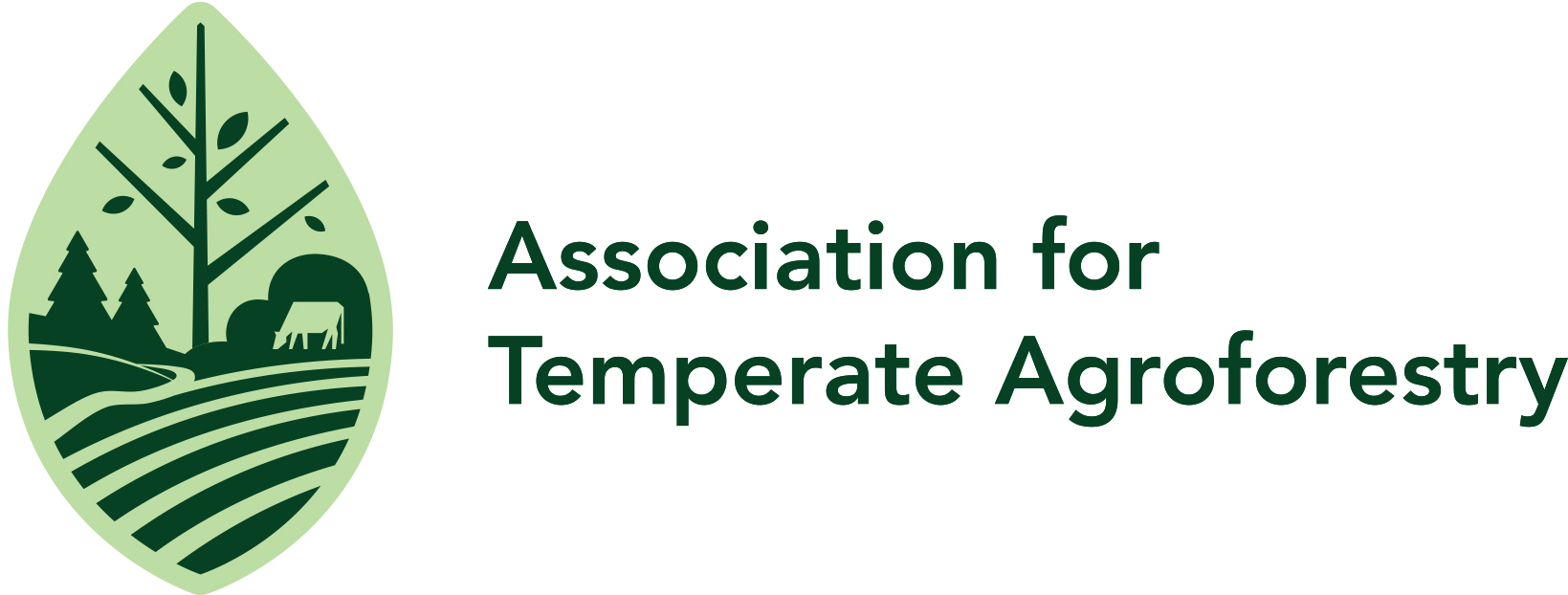| |
Hello Visitor,
Welcome to the Dec 2017 version of the Temperate Agroforester. The newsletter welcomes contributions for future issues and input or feedback about anything that you read in this issue.
Uma Karki, Christine C. Nieman, Steve Gabriel, Diomy Zamora and Callie Maron, Editors - Temperate Agroforester
Events
Jan 25th. 8:30am-6:00pm CST. 9th Annual UMCA Agroforestry Symposium. Soil Health in Diverse Cropping Systems. Bond Life Sciences Center, University of Missouri, Columbia, MO
Call to Action
AFTA needs you! We need your research updates, blog posts, news items and other information to inform our followers. Contact: Andres Anchondo. We are also looking for volunteers to help with membership engagement and website content. Volunteer today to help keep AFTA moving foward.
Membership
Are you a member of AFTA? If not consider joining by clicking here. Your membership gives you access to the members-only area, discounts on conference registration, and helps support AFTA's mission to promote agroforestry.
Contents
Badege Bishaw, AFTA President
 The Association for Temperate Agroforestry (AFTA) is seeking proposals from universities that would like to host the 16th North American Agroforestry Conference to be held in the year 2019 in the month of June. Proposals should be returned to me not later than Thursday, February 28, 2018. Proposals will be accepted from AFTA members at Land Grant Universities in any State/Province, but we are especially interested in proposals from the Northwestern or Southwestern Regions. AFTA members in two or more adjoining States/Provinces may co-host this event, but there will be only one host State (the State in which the conference occurs) recognized by AFTA.
Read More
Alain Olivier, Laval University
 A working group stemming from the Agroforestry Committee of the Quebec Reference Center for Agriculture and Agri-Food (CRAAQ), a network of experts aiming at sharing of information and knowledge transfer, was set up in order to develop a strategic document for promoting agroforestry practices in the province of Québec, Canada.
Read More
Jerome Osentowski and Callie Maron
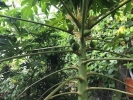 The winter of 2018 will mark the 9th planting year of the 72’, near net-zero energy usage tropical greenhouse at the Central Rocky Mountain Permaculture Institute, located at an altitude of 7,200’ in the mountains of Colorado. While many aspects of a typical tropical agroforestry system apply to this tropical oasis in the snow, the controlled nature of the environment provides additional considerations, and sometimes challenges. Without dramatic weather events such as hurricanes, and wet and dry seasons as factors to work with, there is, in effect, a controlled plant laboratory, with active soils and a functioning ecosystem, allowing for research to be conducted on plant responses to isolated factors such as different guild plantings, natural fertilizers, and pruning.
Read More
Jim Allen, Northern Arizona University
 Agroforestry was well represented at the Society of American Foresters (SAF) National Convention, which took place in Albuquerque, New Mexico from November 15-19, 2017. Highlights included an all-day agroforestry field trip, an agroforestry session with six presentations, several agroforestry-related posters, and a strong turnout for the SAF’s agroforestry working group meeting.
Read More
Hannah Hemmelgarn, University of Missouri Center for Agroforestry
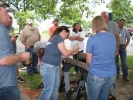 With significant advances in the science of agroforestry over the last 20 years, ongoing agroforestry education programs for natural resource professionals and extension agents have fostered awareness of opportunities to provide productivity and profitability with environmental stewardship. However, agroforestry is severely underrepresented in secondary education environments (Williams 2000), where a growing number of agriculture students are exposed to agricultural focus areas that guide their life-long career paths. In Missouri, the focus state for this pilot agroforestry education project, more than half of students who are enrolled in a high school agriculture program will pursue an agricultural profession after high school (DESE 2016). Nationally, more than 70% of farm operators do not pursue a college degree, further indicating the foundational role of the high school agriculture program (USDA-ERS 2012).
Read More
Todd Kellerman, USDA National Agroforestry Center
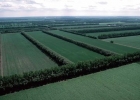 The Prairie States Forestry Program (PSFP) was initiated in 1935 to combat severe soil erosion from the Dust Bowl years. Over the course of the next 7 years, the U.S. Forest Service, working with the Works Progress Administration and the Civilian Conservation Corps, planted nearly 220 million seedlings in the Great Plains. These plantings, known as windbreaks or shelterbelts, created 18,600 miles of linear strips of trees from North Dakota through Texas (Williams 2005). Windbreaks play an important role on the landscape in the plains region. These linear plantings of trees and shrubs are designed to enhance crop production, protect structures and livestock, and benefit soil and water conservation (Figure 1). Windbreaks also provide habitat for wildlife and pollinators, sequester carbon, provide income opportunities and enhance aesthetics.
Read More
Alan Franzluebbers, USDA-Agricultural Research Service, Raleigh NC
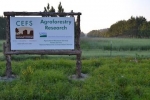 Contemporary agricultural systems do not fit on all landscapes in the southeastern US. Researchers at the Center for Environmental Farming Systems’ Field Research and Outreach Facility at Cherry Research Farm in Goldsboro, North Carolina discovered this when they tried to grow corn and soybean in rotation on a floodplain site with a wide diversity of soil texture and slight variations in elevation (Figure 1). During the first several years, yields were either drought-affected on the sandy hummocks and acceptable elsewhere or decimated in low-lying areas due to flood waters and excessive moisture that rotted crop roots. Fortunately, with the vision of Dr. Paul Mueller, the site was also planted with rows of trees to create a mixture of agriculture and forestry. Once trees became large enough to be pruned of their lower branches and allow people and animals to move under them, investigators transitioned the site from alley cropping to silvopasture – the intentional mixture of trees and pasture.
Read More
|
|
